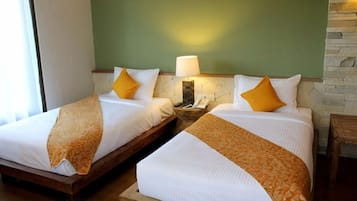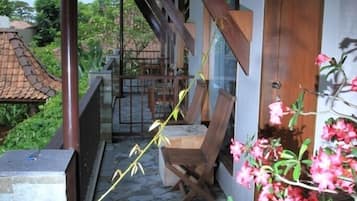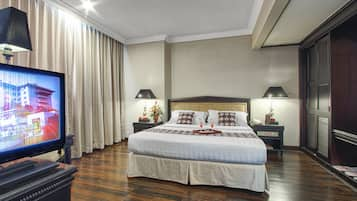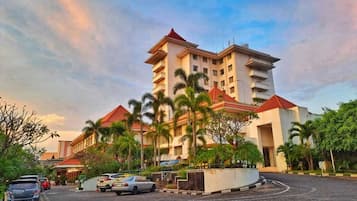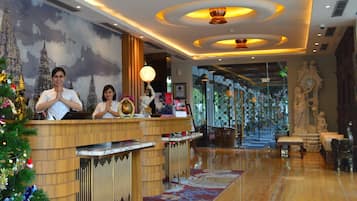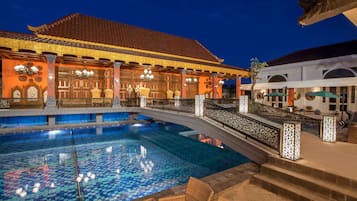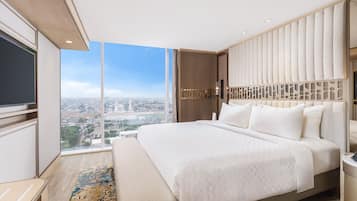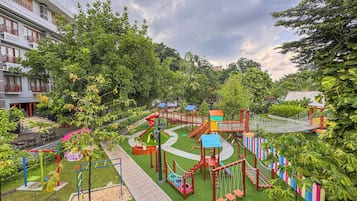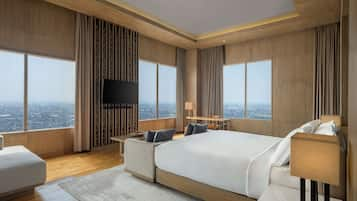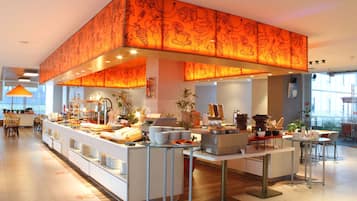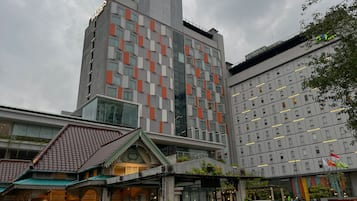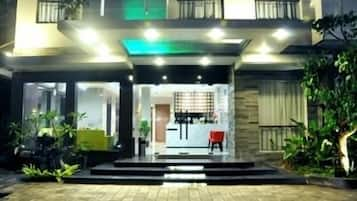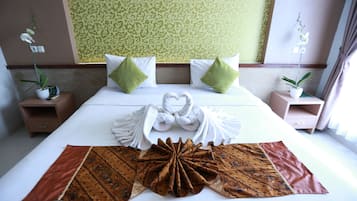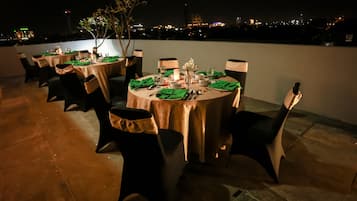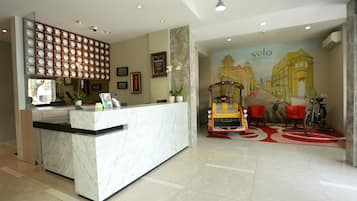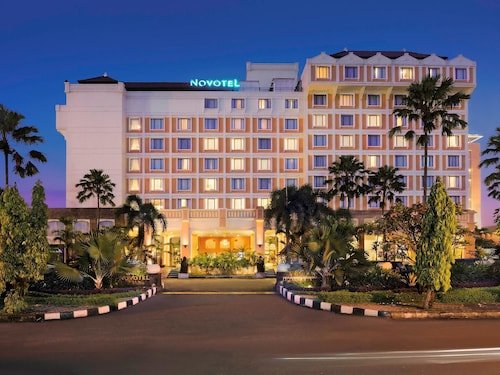Photo by Sharrie Shaw
Find Business Hotels in Surakarta
- Change your mindBook hotels with free cancellation
- Be pickySearch almost a million properties worldwide
Check availability on Surakarta Business Hotels
Top Surakarta Business Hotels

Rumah Batu Boutique Hotel
Baki
9.0 out of 10, Wonderful, (9)

Sahid Jaya Hotel Solo
Solo City Centre
7.2 out of 10, Good, (24)
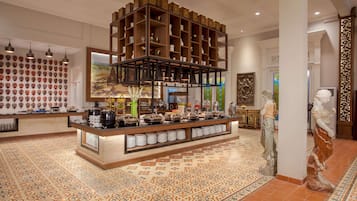
Ramada Suites by Wyndham Solo
Colomadu
9.0 out of 10, Wonderful, (6)
The price is ¥4,957
¥5,998 total
includes taxes & fees
Nov 22 - Nov 23

Aziza Solo
Surakarta
9.0 out of 10, Wonderful, (11)
The price is ¥5,444
¥6,744 total
includes taxes & fees
Nov 19 - Nov 20
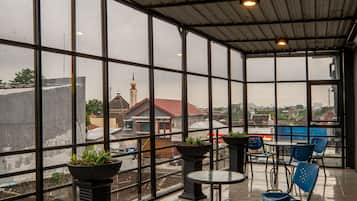
Red Chilies Hotel
Banjarsari

Swiss-Belhotel Solo
Banjarsari
9.2 out of 10, Wonderful, (37)
The price is ¥5,988
¥7,370 total
includes taxes & fees
Nov 17 - Nov 18
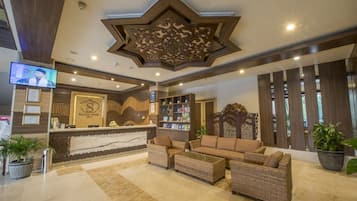
Lorin Syariah Hotel Solo
Surakarta
8.0 out of 10, Very Good, (13)
The price is ¥2,306
¥2,850 total
includes taxes & fees
Nov 14 - Nov 15

Alila Solo, Java
Surakarta
9.2 out of 10, Wonderful, (132)
The price is ¥8,182
¥9,900 total
includes taxes & fees
Nov 19 - Nov 20
Lowest nightly price found within the past 24 hours based on a 1 night stay for 2 adults. Prices and availability subject to change. Additional terms may apply.
Top Surakarta Hotel Reviews
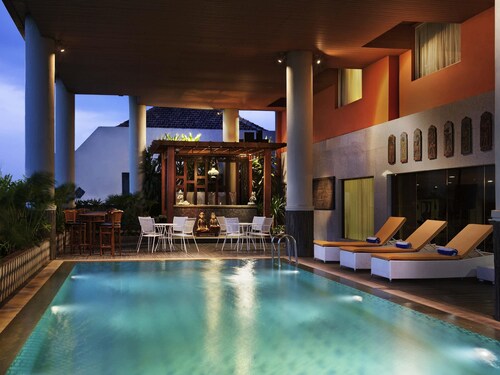
The Royal Surakarta Heritage - Handwritten Collection
6/10 Okay
Explore a world of travel with Expedia
More Accommodation Types in Surakarta
Hotels near popular Surakarta Attractions
Explore more hotels
- Lorin Syariah Hotel Solo
- HARRIS Hotel & Conventions Solo
- POP! Hotel Solo
- Diamond Hotel Solo
- Chrome Hotel & Resort Solo
- Mahalaya The Legacy Solo
- Hotel Neo Gading Solo
- Comfort Centre Residence Solo
- FIM by Zigna
- Hotel Indah Palace Solo
- Hotel Bintang Solo
- Front One Budget Hotel Slamet Riyadi Solo
- Collection O Solo near Universitas Muhammadiyah Surakarta formerly Kedaton Home
- Nata Azana Hotel Solo
- GRAND ORCHID HOTEL SOLO
- Arini Hotel
- Loji Hotel Solo by Wstay
Expedia's Latest Trends
Activities
Packages
General
- Visit Pelabuhan Ratu
- Visit Batam
- Visit Denpasar
- Visit Seminyak
- Visit Makassar
- Visit Bogor
- Visit Manado
- Visit Nusa Dua
- Visit Borobudur
- Visit Kintamani
- Visit Kuta
- Visit Penida Island
- Visit Palu
- Visit Labuhan Ratu
- Visit Yogyakarta
- Visit Medan
- Visit Semarang
- Visit Karangasem
- Visit Lembongan Island
- Visit Manggis
- Visit Surabaya
- Visit Canggu
- Visit Gili Trawangan
- Visit Padang
![At the museum no photos are allowed which is really unfortunate as it was well worth the visit and the guided tour is definitely not to be missed. In the museum there are even Batik made from the Dutch era which depicts stories like Little Red Riding Hood and Snow White!
I enjoyed the tour v much and at the end of the tour we were brought to this room where the artisan were working on hand drawn batik.
Below is an excerpt from Wikipedia for anyone interested in learning more about the process of batik making.
Firstly, a cloth is washed, soaked and beaten with a large mallet. Patterns are drawn with pencil and later redrawn using hot wax, usually made from a mixture of paraffin or bees wax, sometimes mixed with plant resins, which functions as a dye-resist. The wax can be applied with a variety of tools. A pen-like instrument called a canting (IPA: [tʃantiŋ], sometimes spelled with old Dutch orthography tjanting) is the most common. A canting is made from a small copper reservoir with a spout on a wooden handle. The reservoir holds the resist which flows through the spout, creating dots and lines as it moves. For larger patterns, a stiff brush may be used. Alternatively, a copper block stamp called a cap (IPA: [tʃap]; old spelling tjap) is used to cover large areas more efficiently.
After the cloth is dry, the resist is removed by scraping or boiling the cloth. The areas treated with resist keep their original color; when the resist is removed the contrast between the dyed and undyed areas forms the pattern. This process is repeated as many times as the number of colors desired.
The most traditional type of batik, called batik tulis (written batik), is drawn using only the canting. The cloth need to be drawn on both sides and dipped in a dye bath three to four times. The whole process may take up to a year; it yields considerably finer patterns than stamped batik.
Source: Wikipedia](https://images.trvl-media.com/place/6224808/26fd1460-c65a-4c1a-9444-7a893e883ac9.jpg?impolicy=fcrop&w=1200&h=500&q=medium)

